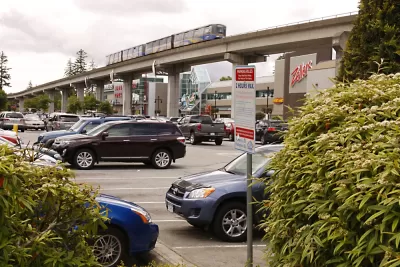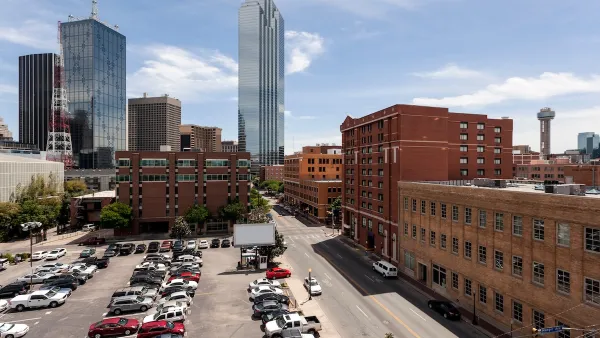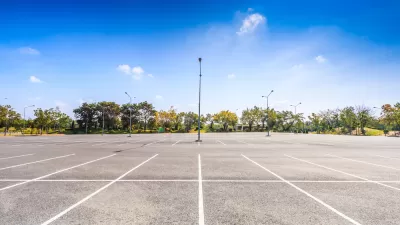Transit Oriented Development projects around the country are still facing suburban-style parking requirements.

Reporting from the Rail-Volution Conference in Dallas, Brandon Formby of The Dallas Morning News looks at how parking requirements for projects around mass transit stations have failed to keep pace with actual needs. Formby cites a study led by University of Utah city planning professor Reid Ewing, which looked at actual parking needs and trip counts for a site in Seattle.
Ewing said the development spurred about 37 percent of the vehicle trips per day that the Institute of Transportation Engineers estimated would occur. He said the guidelines estimated that residential parking demand would require 441 spaces during peak periods. [Ewing] said only 278 spaces would satisfy actual demand.
As has been noted in other studies and articles, the end result of providing more parking than needed is an increase in costs for new housing units in TOD projects. "Those costs are, of course, passed on to renters and buyers — even those without vehicles," said Minneapolis land-use manager Jason Wittenberg.
FULL STORY: Are parking requirements and regulations out of touch with today’s world?

Planetizen Federal Action Tracker
A weekly monitor of how Trump’s orders and actions are impacting planners and planning in America.

San Francisco's School District Spent $105M To Build Affordable Housing for Teachers — And That's Just the Beginning
SFUSD joins a growing list of school districts using their land holdings to address housing affordability challenges faced by their own employees.

The Tiny, Adorable $7,000 Car Turning Japan Onto EVs
The single seat Mibot charges from a regular plug as quickly as an iPad, and is about half the price of an average EV.

Seattle's Plan for Adopting Driverless Cars
Equity, safety, accessibility and affordability are front of mind as the city prepares for robotaxis and other autonomous vehicles.

As Trump Phases Out FEMA, Is It Time to Flee the Floodplains?
With less federal funding available for disaster relief efforts, the need to relocate at-risk communities is more urgent than ever.

With Protected Lanes, 460% More People Commute by Bike
For those needing more ammo, more data proving what we already knew is here.
Urban Design for Planners 1: Software Tools
This six-course series explores essential urban design concepts using open source software and equips planners with the tools they need to participate fully in the urban design process.
Planning for Universal Design
Learn the tools for implementing Universal Design in planning regulations.
Smith Gee Studio
City of Charlotte
City of Camden Redevelopment Agency
City of Astoria
Transportation Research & Education Center (TREC) at Portland State University
US High Speed Rail Association
City of Camden Redevelopment Agency
Municipality of Princeton (NJ)





























